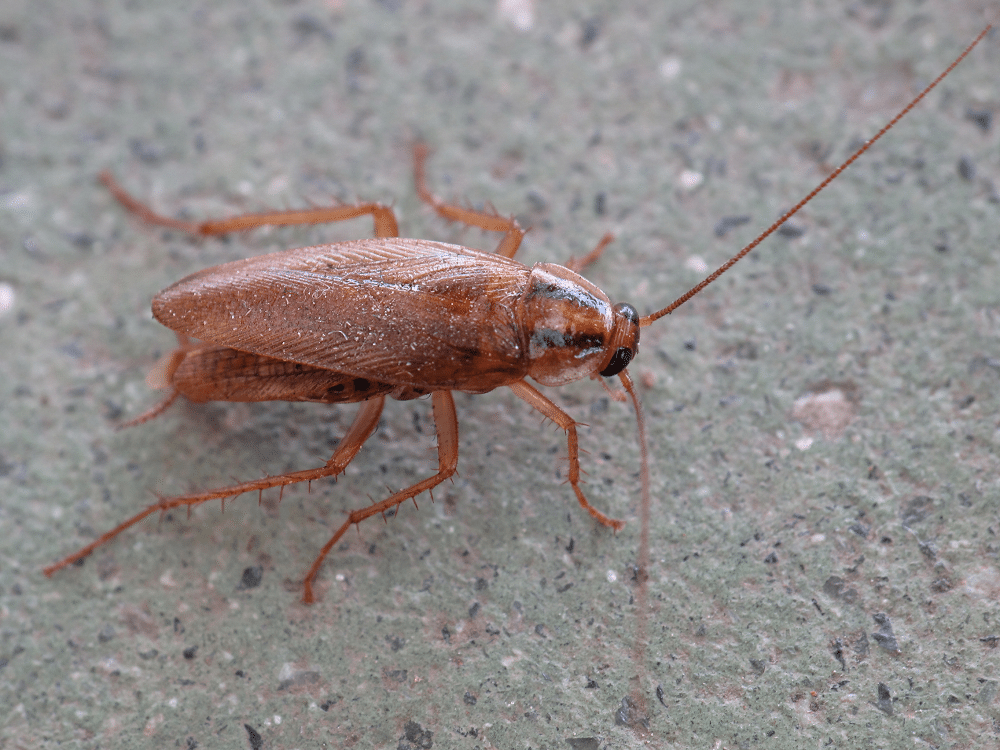Cockroaches rank among the most persistent and adaptable pests in homes worldwide. These insects have survived for millions of years because they excel at finding food, water, and shelter in human environments. They prefer dark, warm, and humid spaces, which explains why you often spot them in kitchens and bathrooms. Cockroaches are nocturnal creatures, meaning they're most active at night when you're asleep, making their populations seem smaller than they actually are.
What makes cockroaches particularly troublesome is their reproductive capacity. A single female German cockroach can produce up to 400 offspring in her lifetime. This rapid reproduction rate means that seeing one cockroach likely indicates many more hiding within your walls, under appliances, or in other concealed spaces. Understanding these behavioral patterns is essential for effective control which classifies cockroaches as vectors that can spread disease.
How to Get Rid of Cockroaches: Effective Strategies
Mar 23

Prevention Techniques
The first line of defense against cockroach infestations is maintaining impeccable cleanliness in your home. Cockroaches need three basic things to thrive: food, water, and shelter. By eliminating these resources, you make your home significantly less attractive to these pests. Clean up food spills immediately, store food in airtight containers, take out garbage regularly, and fix leaky pipes that provide water sources. Regular vacuuming helps remove food particles from floors and furniture that might otherwise feed a cockroach population.
Sealing entry points is another crucial prevention strategy. Cockroaches can squeeze through remarkably small gaps—as tiny as 1/16 of an inch for some species. Inspect your home for cracks in walls, gaps around pipes, and spaces under doors. Use caulk to seal cracks in walls and foundations, install door sweeps, and repair damaged window screens. Pay special attention to areas where utilities enter your home, as these often provide convenient access points for pests. For more detailed prevention tips, check out Rockypest that can help keep your home roach-free.
Natural Remedies
For those who prefer eco-friendly approaches, several natural remedies can help control cockroach populations. Diatomaceous earth (DE) stands out as an effective option—this fine powder damages the waxy outer layer of cockroaches' exoskeletons, causing them to dehydrate and die. Sprinkle DE in areas where cockroaches travel, such as behind appliances, under sinks, and along baseboards. While it's safe for humans and pets, wear a mask when applying it to avoid respiratory irritation.
Boric acid offers another natural solution that has proven effective against cockroaches. When cockroaches walk through boric acid powder, it sticks to their legs and bodies. Later, when they groom themselves, they ingest the powder, which damages their digestive systems and eventually kills them. Mix boric acid with equal parts sugar to attract the roaches. Essential oils like peppermint, cypress, and tea tree oil can also repel cockroaches due to their strong scents that these pests find offensive. Create a spray by mixing 10 drops of essential oil with water in a spray bottle and apply it to cockroach entry points and pathways.

Chemical Solutions
When natural remedies don't provide sufficient control, chemical solutions may become necessary. Cockroach baits combine food attractants with insecticides, luring roaches to consume the poison and then return to their nests where they die. This method is particularly effective because cockroaches are cannibalistic—when one dies, others eat it and are poisoned in turn, creating a domino effect that can eliminate entire colonies. Place baits in areas with high cockroach activity, especially dark corners, under sinks, and behind appliances.
Insecticide sprays provide immediate results when you need to quickly reduce visible cockroach populations. These products come in various formulations, including residual sprays that continue working for weeks after application. When using chemical sprays, always follow label instructions carefully, ensure proper ventilation, and keep children and pets away from treated areas until the product dries. Insect growth regulators (IGRs) offer a longer-term solution by disrupting the cockroach life cycle. These chemicals prevent young cockroaches from maturing into reproductive adults, eventually causing the population to die out. For maximum effectiveness, combine IGRs with other control methods as part of an integrated pest management approach.
When to Call Professionals
Despite your best efforts, some cockroach infestations prove too stubborn for DIY methods. If you've tried multiple approaches without success, or if the infestation seems to be growing despite your interventions, it's time to consider professional pest control services. Professionals have access to commercial-grade products and equipment that aren't available to consumers. They also possess the training to apply these products safely and effectively, targeting cockroach hiding spots you might miss.
Professional exterminators can develop customized treatment plans based on the specific cockroach species in your home and the extent of the infestation. They'll conduct thorough inspections to identify all nesting sites and entry points, then use a combination of baits, insecticides, and preventive measures to eliminate the current problem and prevent future ones. Many companies now offer integrated pest management (IPM) approaches that minimize chemical use while maximizing effectiveness. For severe infestations, multiple treatments may be necessary, but the investment typically saves money and frustration compared to prolonged DIY attempts that yield limited results.
